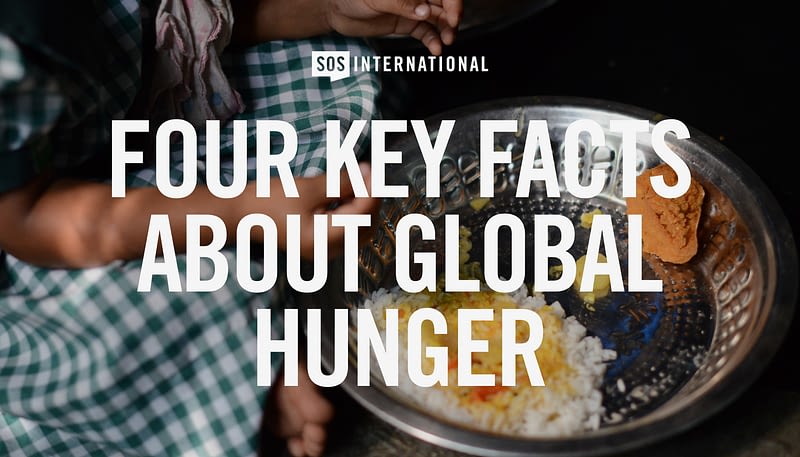Written By: SOS International
As summer feeding programs continue around the world, our focus is on feeding hungry children. The global hunger issue is currently very challenging. When it comes to sharing information about hunger, it’s easy to be overwhelmed by the numbers and facts presented at once.
The truth is that hunger cannot be fully captured with just a few simple facts. But sometimes, just a bit of information is enough to spur us into action. Here are four facts about the current state of global hunger.
1) Approximately 1 in 11 people worldwide face hunger¹
In total, approximately 757 million people experience chronic hunger. Chronic hunger means that people do not have enough food to sustain a healthy life, often missing out on essential nutrients over a prolonged period.
2) More than half of the world’s hungry people live in Asia²
While Africa has the highest rate of food insecurity at 20.4 percent, affecting a total of 298.4 million people, Asia has the largest number of hungry people, with 384.5 million – more than half of the world’s hungry population.³ With Asia’s food insecurity rate at 8.1 percent, the higher population density results in a higher number of people facing hunger. As you may already know, Asia is where SOS’s work started, and we’ve seen firsthand the challenges this region faces.
3) Almost 1 in 5 children are chronically malnourished⁴
There are 148 million children in the world who face some level of malnutrition. Malnutrition can be life-threatening, especially for younger children. Limited eating and a lack of essential nutrients can hinder children’s development of critical bodily functions, including their brain development and immune system. A child who does not get the right amount of nutrients is at a severe risk of disease, and sustained malnutrition will lead to an irreversible impact.
4) The two leading factors of hunger: Conflict & Extreme Weather⁵
Political instability and conflict disrupt food security by affecting the availability, stability, and accessibility of food. Turmoil can disrupt supply chains and trade routes, leading to food shortages, especially in regions that heavily rely on imports. Environmental factors also influence the food we grow and consume. Extreme weather events, such as droughts and floods, can harm crop yields and disrupt the local food supply chain.
To learn more about how SOS works to secure the lives of at-risk children through feeding, check out these resources:



